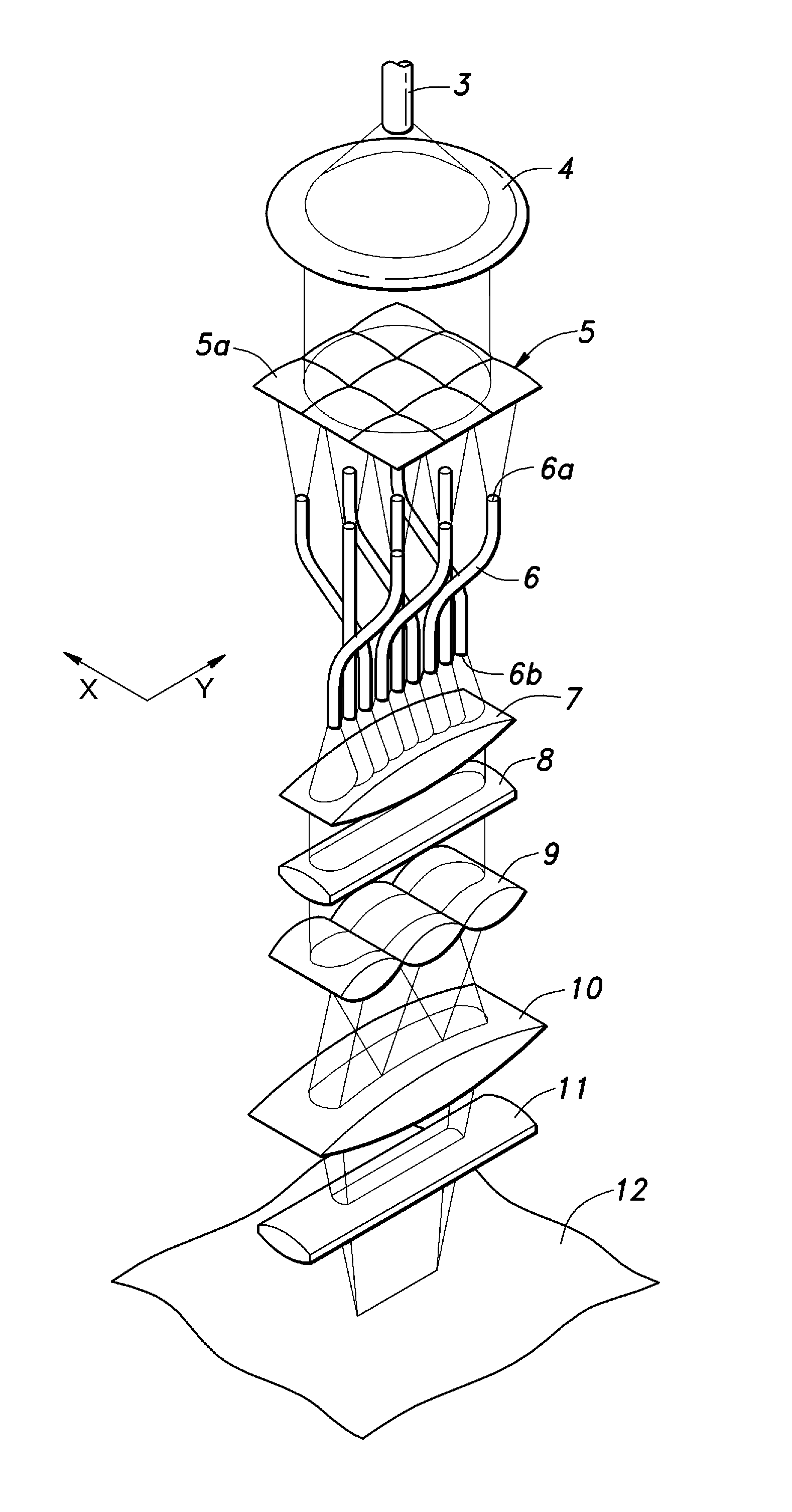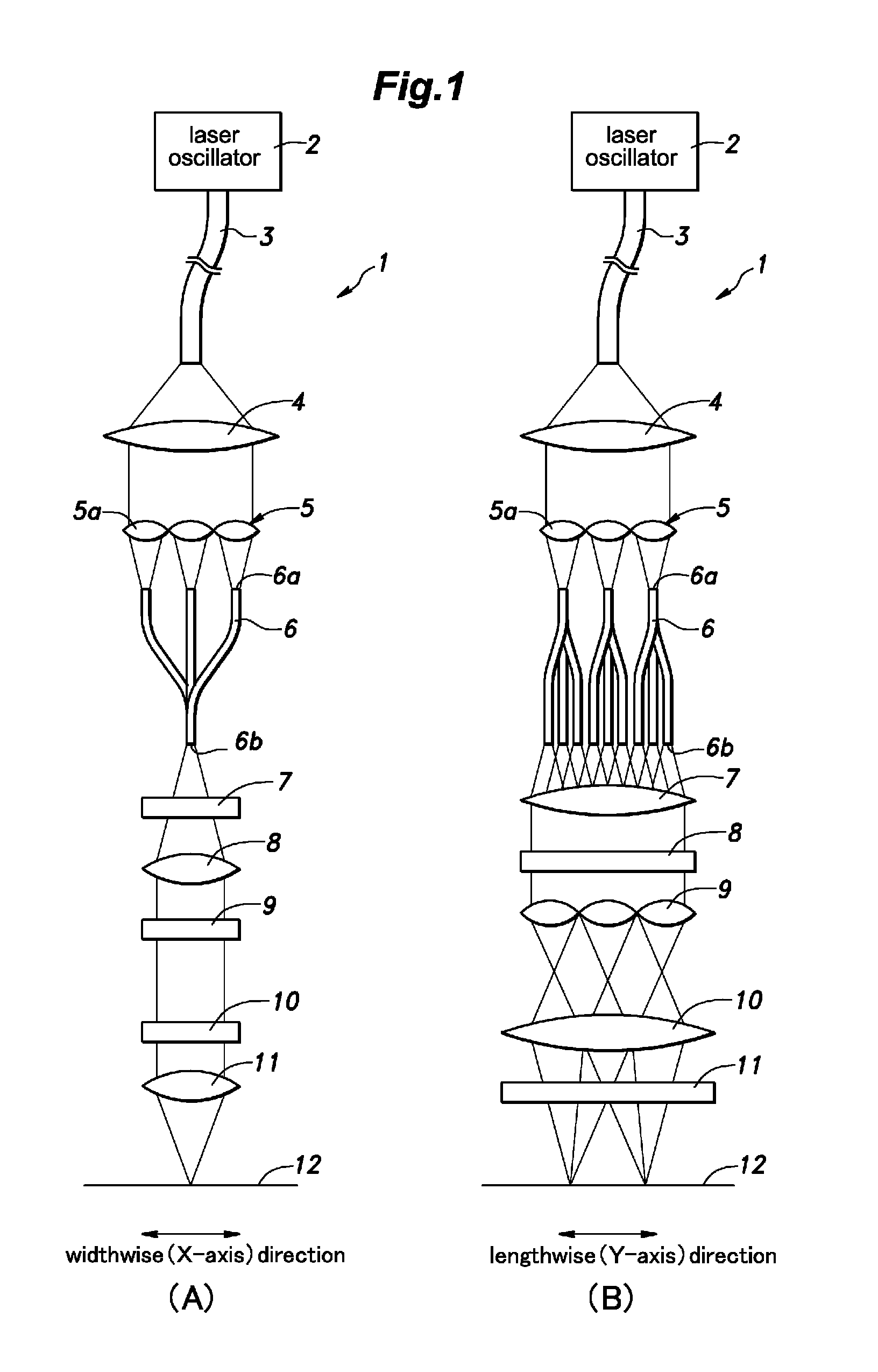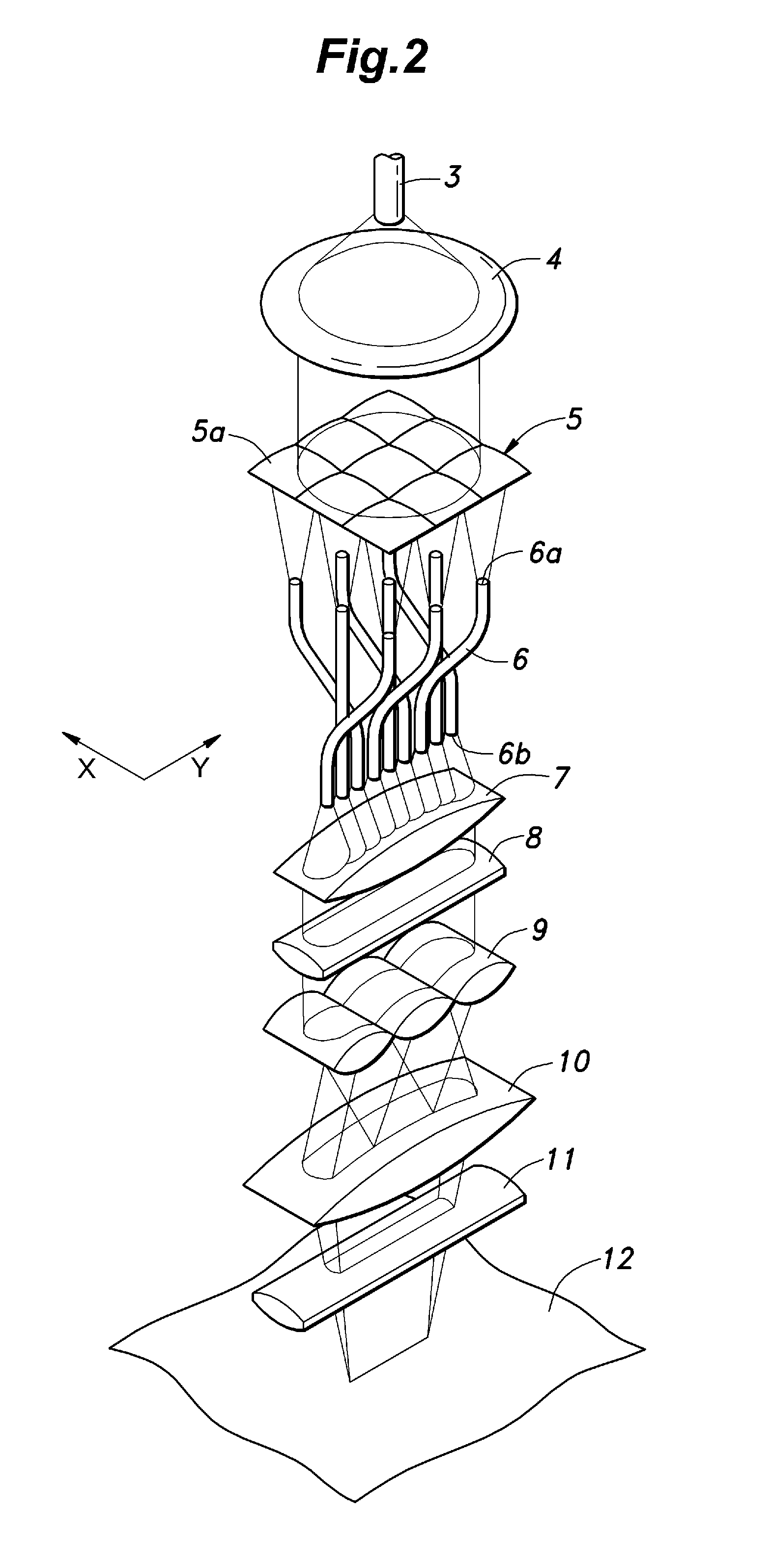Laser optical system using optical fiber transmission
a laser optical system and optical fiber technology, applied in the field of laser optical systems, can solve the problems of significant energy loss, increased risk of damage with an increase in the energy density of the input laser light, and damage to optical fiber, and achieves the effects of high output, improved performance of laser oscillators, and improved optical fiber
- Summary
- Abstract
- Description
- Claims
- Application Information
AI Technical Summary
Benefits of technology
Problems solved by technology
Method used
Image
Examples
Embodiment Construction
[0024]Now the present invention is described in the following in more detail in terms of a concrete embodiment with reference to the appended drawings.
[0025]FIG. 1 is a schematic diagram of a laser optical system 1 using optical fibers for transmitting laser light embodying the present invention. In particular, FIG. 1(A) shows a front view of the optical system, and FIG. 1(B) shows a side view of the optical system. As shown in FIGS. 1 and 2, the laser optical system 1 includes a laser oscillator 2 having a first optical fiber 3 connected to a laser output end thereof. The first optical fiber 3 is provided with a relatively large core diameter which is large enough to avoid damage to the first optical fiber 3 when subjected to the laser light emitted from the laser oscillator 2, and emits laser light having a prescribed divergent cone angle from an output end thereof. To the output end of the first optical fiber 3 is disposed a collimator lens 4 which transforms the laser light emit...
PUM
| Property | Measurement | Unit |
|---|---|---|
| core diameter | aaaaa | aaaaa |
| diameter | aaaaa | aaaaa |
| surface area | aaaaa | aaaaa |
Abstract
Description
Claims
Application Information
 Login to View More
Login to View More - R&D
- Intellectual Property
- Life Sciences
- Materials
- Tech Scout
- Unparalleled Data Quality
- Higher Quality Content
- 60% Fewer Hallucinations
Browse by: Latest US Patents, China's latest patents, Technical Efficacy Thesaurus, Application Domain, Technology Topic, Popular Technical Reports.
© 2025 PatSnap. All rights reserved.Legal|Privacy policy|Modern Slavery Act Transparency Statement|Sitemap|About US| Contact US: help@patsnap.com



